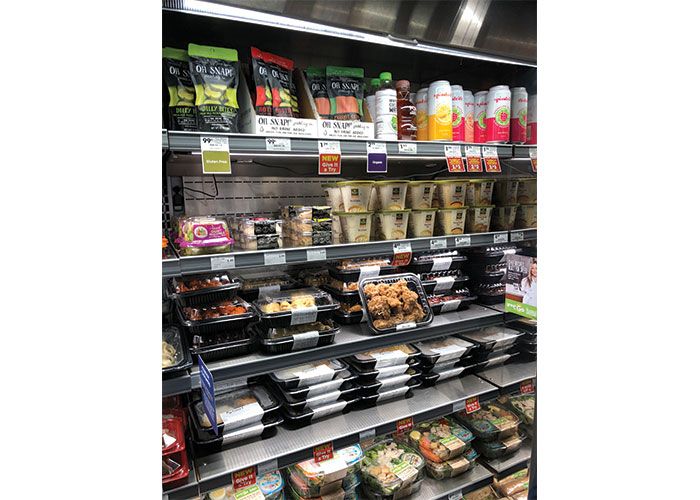For part three of our ‘RN in America’ series, RN finds out how GetGo gas stations bring quick and healthy quality food to forecourts and challenge their customers’ perceptions
GetGo gas stations offer customers a simple service – tasty, quality, made-to-order food ready in five minutes or less.
On the surface, this sounds like a similar business model to Sheetz (featured 2 November), but the business that would become GetGo was purchased by Giant Eagle (owner of the foodie Market District stores featured 9 November) in 2003 and therefore has access to its healthier products.
GetGo has around 200 stores in comparison with Sheetz’s 600, but where Sheetz focuses its offer on big coffees and burgers, GetGo uses Giant Eagle’s commissary to bring premium lunch lines such as chicken salad croissants and Caesar salads into a gas station range. It’s a formula that is working
for its rival, Sheetz. But the company has grown at twice the national average of convenience stores for the past four years.
“We start with the level of quality we want to achieve and then look at cost, not the other way around,” says Rug Phatak, GetGo’s marketing director. “We really promote the idea of unexpected fresh food quality in a convenience store.”

This thinking is reflected throughout the entire store. Low-calorie options are a rarity in most American convenience stores, but GetGo offers an impressive choice of healthy and premium options throughout.
“We do Angus beef patties that cost a little more but we think they are worth it,” Rug explains. The food is promoted with big, bright TV screens above the kitchen and tills. Burgers and hotdogs are promoted alongside salads and wraps, with videos promoting smoothies and seasonal options.
“Over the past year, we’ve become a lot more thoughtful about capturing video content. It’s priceless to play in store and on social media.
“You have to really make the most of anything you do and think about how you can make events and campaigns last longer,” says Rug.
The company is in the process of promoting a campaign on social media that shows off the sustainability of the company’s coffee.
“We’re going to convert one of our iced tea dispensers to iced coffee brewed fresh every day. We’ll get rid of the extra sugars and have a low-calorie option,” he explains.
GetGo is clear about the battles it wants to fight – using its own-brand on healthier lines such as granola and salads but employing mainstream brands such as Krispy Kreme for its doughnuts, which are delivered fresh every day.
“When we converted our slush to a brand that people knew, parents trusted and kids loved, sales tripled,” Rug says.
But the really impressive part of GetGo stores is the side that customers never see. Heading behind the counter and into the kitchen, it becomes apparent that aside from a couple of cages of beer, the 5,500sq ft store holds no stock, turning the space it would use for a stock room into a kitchen.
“Our stock is on automatic replenishment. Everything we need gets delivered four times a week and all the stock goes straight out onto the shop floor,” says senior director Adam Ruskin.
“It’s cheaper to store stock in warehouses than in back rooms in our stores.” Even the frozen ingredients for ordered food in store are used up every day, with a 50% reduce-to-clear used to make any cost of wastage back.
Despite the breadth of the food menu, the kitchen is simplified to function with just two people operating it the majority of the time. It is set up for food to go with stations positioned in a semicircle, starting with bread or bases on one side of the room, then fillings on another station, then sauces and then out to the customer. Orders are communicated by a screen that counts how long each customer has been waiting for, indicating which are the priorities.
“During lunch, the screen is full. We could have up to 30 orders a time and, because we do breakfast all day, maintaining that five-minute target can be challenging,” Rug says.
What would the team prefer if they had to choose between speed and quality? “I’m okay with six minutes if it’s been made right,” admits Rug. “We choose quality every time.”






















Comments
This article doesn't have any comments yet, be the first!